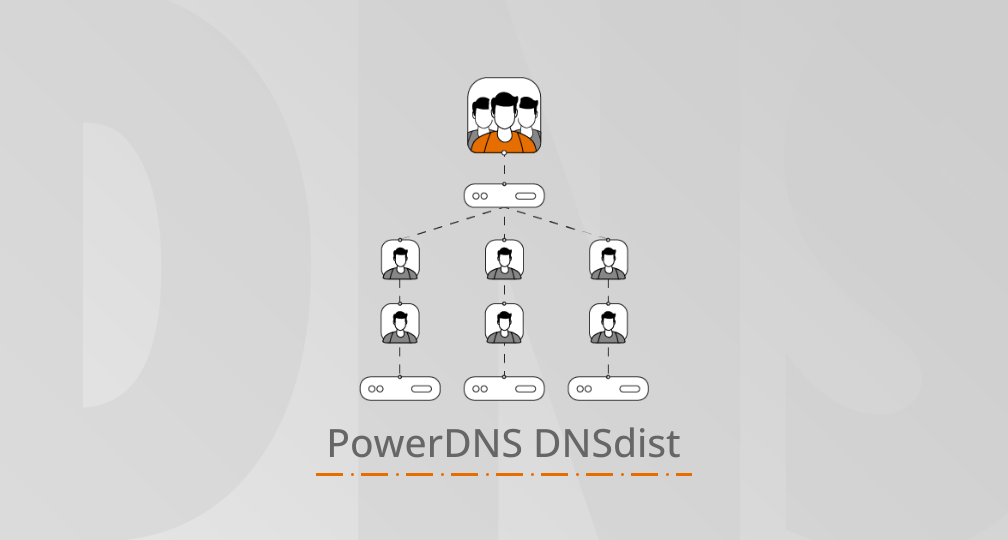From very early on, PowerDNS recognized the benefits that a cloud-native DNS deployment provides to our customers. Just to name a few: a future-proof architecture, lowest cost operations, increased scalability, and more efficient platform management through containerization, automation, orchestration and lifecycle management, monitoring and alerting.
That's why we were one of the first to launch a truly cloud-native DNS solution with PowerDNS Cloud Control in early 2021. PowerDNS Cloud Control allows operators to deploy and manage DNS nodes in several data centers and locations simultaneously. This includes servers as close to end-users as possible, enabling your DNS for edge computing, 5G, regional pods and IoT scenarios.
Since the launch of PowerDNS Cloud Control in 2021, PowerDNS has become a leader in cloud-native DNS by leveraging Cloud Native Computive Foundation (CNCF) recommended cloud-native tools such as Helm, Docker and Prometheus to deploy PowerDNS services on a Kubernetes platform.
Over time we have made more and more PowerDNS components available for cloud-native deployments. We started with our DNS resolving product PowerDNS Recursor and our load balancer DNSdist. In 2022, we expanded the cloud-native portfolio to include PowerDNS Authoritative Server. Last year, we added Lightning Stream, a completely new, cloud-native friendly storage backend and therefore automated synchronization and replication of DNS data for Cloud Control.
Now it is time for the next step: we are very happy to release the next major version of our cloud-native deployment solution and announce that Cloud Control 3.0 has been expanded to include DNS filtering functionality. Because almost every action on the internet uses DNS, DNS-based security is very reliable, highly scalable, cost-effective, and therefore ideal to protect subscribers, their devices and IoT gadgets. With Cloud Control 3.0, PowerDNS now offers a cloud-native deployment option for DNS-based security to protect all subscribers and connected devices against malware, phishing, DNS tunneling, botnet and DDoS attacks, as well as other malicious activities. Cloud Control 3.0 also supports regulatory DNS filtering to block country-specific and other undesired content.
In addition, this next major version extends Cloud Control with data storage and analysis capabilities. It includes the ability to send individual DNS events to S3 storage and generate reports on all DNS traffic to visualize and monitor, for example, top queried domains, top domains causing issues (such as NXDOMAIN or SERVFAIL), top querying IPs/ranges, top filtered domains, and top reasons for domain filtering.
Cloud Control 3.0 introduces an additional Controlplane Helm chart. This chart includes our reporting capabilities as well as the data-source integration components that allow integration with virtually any third-party data source, including SQL DB, text file, HTTP, and others. In future releases of Cloud Control, the capabilities of the Controlplane chart will grow to include all the control plane capabilities of the PowerDNS Platform Filter product.
This additional Helm chart for Controlplane means that Cloud Control now consists of three major components:
- Userplane: The PowerDNS base products for DNS load-balancing, recursive DNS, authoritative DNS and accompanying security solutions, i.e. DNS filtering.
- Controlplane: PowerDNS products for reporting and provisioning of feeds that support the Userplane functions. In future this will contain all control plane functionality of PowerDNS Platform Filter.
- Monitoring: A comprehensive monitoring blueprint, which can be deployed alongside Userplane and Controlplane deployments.
The PowerDNS engineering team has worked hard to create this new, more complete version of Cloud Control. We are very confident that the result, Cloud Control 3.0, is contributing significantly to operators’ and enterprises’ moves towards cloud-native solutions as the basis of their services.
Please let us know if you want to learn more about Cloud Control and cloud-native PowerDNS, as well as how we can support your transition to a future-proof cloud-native DNS architecture.




